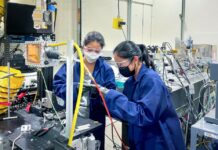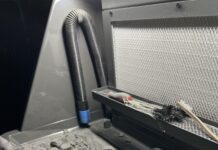Materials producer Copper3D embarks on a new project with UNO Biomechanics, a department of the university of Nebraska dedicated to understanding the complexity of movement through biomechanical research.
Together, they have received a $1.125M NASA EPSCoR grant that will serve to the development and testing of 3D printable antimicrobial, recyclable materials for space missions. This collaboration started in 2018. A first grant was awarded to test this new technology of antimicrobial materials for 3D printing in microgravity (Zero-G), then in February 2019 another grant was awarded to evaluate the feasibility of 3D print a set of medical devices under Zero-G conditions.
Prof. Jorge Zuniga Ph.D, from UNO and Co-Director of the Biomechanics Rehabilitation and Manufacturing Initiative (BRMI) comments about this latest collaboration with NASA:
“The challenges behind these investigations and the interest that NASA has in this antimicrobial technology is due to two fundamental problems. First, there is extensive evidence that astronauts who are subjected to long-term space missions suffer from an “immune system dysregulation” suspected to have a multifactorial origin (disturbed sleep cycles, confinement, exposure to high radiation, etc.). Secondly, bacteria and viruses become more resistant in microgravity, which added to the previous factor, makes space missions of more than six months in orbit, very risky now. In this context, it is extremely important to have new materials, tools, medical devices, and everyday objects with antimicrobial properties, which is precisely the area of expertise of Copper3D.
There is an additional factor involved in this problem, which is logistical and has to do with the limited space available on the ISS (International Space Station) and the future space exploration stations, so they need logistical support systems that are increasingly autonomous and decentralized, for this reason, 3D printing technology would allow astronauts on these long space missions to manufacture their own spare parts, tools, and medical devices completely on-demand. If we add to this scenario the concept of circularity, that is, to be able to use the same material several times, for different applications, and be subjected to several recycling and re-manufacturing processes, without losing its antimicrobial properties, this will save a lot of weight, time, resupply missions and other logistical and medical complications that would make these future space missions much more feasible and safer”.

Through this grant funding, two new antimicrobial materials will be developed by Copper3D, then manufactured and tested for safety on Earth in a replica of the ISS Additive Manufacturing Facility. Once the safety of the material has been validated, the team will prepare the launch, operation, and return-to-Earth activities. UNO Biomechanics will work with 3D printer manufacturer Made in Space and NASA to create the test coupons, or printed representations of the final in-space devices, as well as conduct post testing on Earth of the antimicrobial effectiveness.
Remember, you can post free of charge job opportunities in the AM Industry on 3D ADEPT Media or look for a job via our job board. Make sure to follow us on our social networks and subscribe to our weekly newsletter : Facebook, Twitter, LinkedIn & Instagram ! If you want to be featured in the next issue of our digital magazine or if you hear a story that needs to be heard, make sure to send it to contact@3dadept.com






